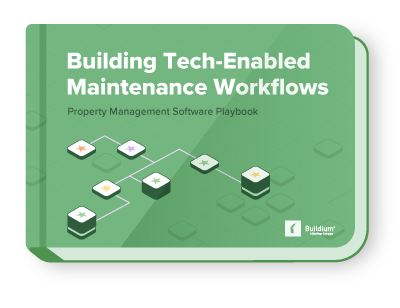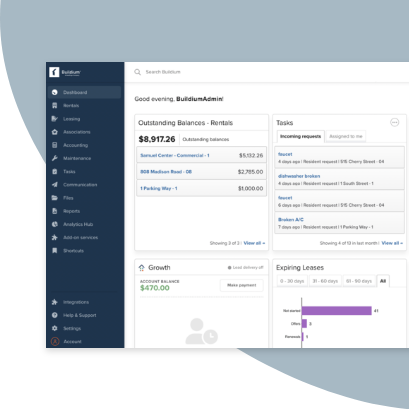Disclaimer: This blog post is meant for informational purposes only and does not constitute legal advice. Consult with a licensed attorney in Ohio for specific legal guidance.
Property management in Ohio, as in many states, requires a keen understanding of local laws and regulations that pertain to residential rental property lease agreements. Ensuring that these agreements are comprehensive and compliant with relevant regulations not only helps protect owners’ interests but also fosters a transparent, healthy relationship with tenants.
In this guide, we’ll explore the fundamentals of residential lease agreements in Ohio, from their definition to their various types, along with the laws that help frame them.
Once you’re equipped with the knowledge below, you can download our free Ohio sample lease agreement template using the “Download Sample Form” button above. It’s an easy way to get one step closer to creating your leases and filling your units. Remember to have your own legal counsel review your lease before offering it to prospective residents.
What Is an Ohio Lease Agreement?
An Ohio lease agreement is a binding contract between an owner (or property manager acting on their behalf) and a tenant. This document outlines the terms and conditions governing the rental of residential property. It serves as a guideline and reference point you can use to set expectations and help handle disputes if they emerge during the lease.
Ohio has specific laws that govern rentals, such as the Ohio Landlord-Tenant Law. This law provides a framework that both owners and tenants must operate within, keeping lease agreements fair and balanced.
Who Needs an Ohio Lease Agreement?
The following groups can all benefit from a lease agreement:
1. Owners and Property Managers: Anyone renting out residential property in Ohio needs a lease agreement to protect their interests and provide them with legal recourse if disputes arise. Property managers, in particular, should have a thorough understanding of Ohio’s leasing laws to provide the best service to property owners and tenants alike.
2. Tenants: A lease agreement isn’t just for the benefit of owners. Tenants need this contract to understand their rights, responsibilities, and the terms of their residency. The agreement offers clarity on important matters such as rent payments, property maintenance, and the conditions under which they can remain on the property.
3. Real Estate Agents and Attorneys: Professionals involved in the renting process, whether helping owners find tenants or assisting in legal matters related to leasing, should be conversant with Ohio lease agreements. They play an important role in keeping the documents you draft accurate and compliant with state laws.
Types of Ohio Lease Agreements
In Ohio, specific types of lease agreements cater to different rental situations.
1. Standard Residential Lease Agreement: Typically for a fixed term, such as one year, this is the most common lease agreement. It details the monthly rent, security deposit, maintenance responsibilities, and other essential terms.
2. Month-to-Month Lease: As the name suggests, this agreement renews monthly. Typically, either party can terminate the lease with a 30-day notice, offering flexibility but less long-term security.
3. Room Rental (Roommate) Agreement: This type of lease is for individuals renting a single room in a property. It may have clauses that differ from standard leases, especially concerning shared spaces and utilities.
4. Sublease Agreement: When an original tenant wishes to rent out the property (or a portion of it) to another party, they use a sublease agreement. The primary lease agreement must allow for subletting for this to be valid.
5. Commercial Lease Agreement: Though our focus is on residential leases, it’s worth noting that commercial leases exist for business properties. The stipulations in commercial agreements can differ significantly from residential leases.
What Should an Ohio Lease Agreement Include?
For property managers in Ohio, creating an airtight lease agreement is non-negotiable. This foundational document establishes a clear relationship between owners (or property managers) and tenants, keeping both parties aware of their rights and responsibilities.
In this section, we’ll delve into some of the essential components an Ohio lease agreement should include to stay compliant and clear.
Parties Involved
Every lease agreement should begin by identifying the parties involved. These usually include the:
-Owner/Property Manager: Include full names and contact details of the individual or entity renting out the property.
-Tenant: Every lease should include the full names and appropriate contact details for each tenant, as well.
Be sure to use legal names to ensure the lease is legally enforceable.
Lease Duration Dates
Each lease should specify the start and end dates of the tenant’s occupancy. Ohio lease agreements often come in one of two types:
-Fixed-Term Lease: This agreement has a definite start and end date, commonly spanning a year.
-Month-to-Month Lease: This renews every month and continues until either the owner or tenant gives a 30-day notice to terminate.
Rent and Security Deposit Information
Being clear on financial terms is a must. Here’s what to include in your lease:
-Rent Amount and Due Date: Clearly specify the monthly rent and its due date each month.
-Late Fees: State any fees applied if the rent is paid after the due date.
-Security Deposit: Highlight the amount, its purpose (covering potential damages), and the conditions and timeline for its return. Ohio law does not set a maximum limit on security deposits.
Occupancy Limits
This section helps ensure that only the individuals named in the lease occupy the property. Clearly define who is allowed to reside in the rented premises. It’s a measure to prevent subletting or additional occupants without the owner’s knowledge or consent.
Property Management Company and Tenant Responsibilities
This section outlines the expectations of both the property management company and the tenant. By including it in a lease, both parties agree to certain responsibilities, including:
-Maintenance and Repairs: The responsibilities of the property management company regarding property maintenance, such as landscaping or structural repairs
-Tenant Responsibilities: Tenants’ duties, such as maintaining cleanliness, reporting damages promptly, or complying with local noise regulations
Pet Policies
Pets can be a contentious topic in lease agreements, and your property’s pet policy should be laid out in your lease agreement. If pets are allowed, specify which types and detail any breed or size restrictions. If there is a pet deposit or monthly fee, this is the place to spell it out. Make sure any pet-related fees or deposits comply with Ohio’s regulations.
Ohio Lease Agreement Addenda and Disclosures
For Ohio property managers, creating a comprehensive lease agreement is only half the battle. To stay compliant with state and federal laws, certain disclosures and addenda must be integrated into your lease. These details offer additional protection for both owners and tenants.
Here are the important stipulations that property managers should be aware of in Ohio. This list is not exhaustive, so consult a legal professional if you’re unsure about what to include in your own agreements:
Lead-Based Paint Disclosures
Any residential property built before 1978 might contain lead-based paint, which presents certain health risks. Federal law mandates that owners and property managers must:
1. Provide a Disclosure: Tenants should receive an EPA-approved information pamphlet on lead poisoning prevention.
2. Include a Lead Warning Statement: The lease agreement must have a statement warning of the potential presence of lead-based paint.
3. Disclose Known Lead Hazards: If the owner is aware of any lead-based paint or related hazards in the property, these must be explicitly disclosed.
Optional Disclosures and Addenda
Beyond mandatory disclosures, there are several optional addenda that property managers may consider:
1. Maintenance Addendum: This can provide clarity regarding specific maintenance responsibilities, such as lawn care or snow removal.
2. Smoke-Free Addendum: If the property is designated as non-smoking, this addendum can detail the specifics and any penalties for violations.
3. Early Termination Clause: This addendum outlines conditions under which a lease can be prematurely terminated, the amount of notice required, and any associated fees.
4. Renovation/Addition Addendum: For tenants who might want to make changes or additions to the property, this addendum sets the terms, conditions, and permissions.
These addenda should always be clear to prevent potential disputes.
Consequences for Not Including Mandatory Disclosures
Failing to include the required disclosures can have significant implications:
1. Legal Penalties: Not adhering to mandatory disclosures, especially federal ones such as the lead-based paint disclosure, can lead to legal actions and hefty fines.
2. Voiding of Lease Agreement: Certain undisclosed terms can render a lease agreement void or unenforceable in court.
3. Loss of Tenant Trust: Transparency is the foundation of an owner-tenant relationship. Failing to disclose essential information can lead to mistrust and sour the relationship.
4. Financial Liability: If a tenant suffers harm or damages due to undisclosed information (e.g., health issues from lead exposure), the owner might be held financially liable.
Always consult a lawyer who specializes in Ohio rental law when drawing up new lease agreements.
Ohio Lease Agreement Laws and Regulations
Part of property managers’ responsibilities include navigating the intricate landscape of lease laws and regulations. Here are some factors to keep in mind to keep your leases compliant.
Security Deposits
The handling of security deposits in Ohio is governed by specific regulations pertaining to deposit maximum amounts, return time periods, and penalties for failing to comply with these regulations. There may also be requirements on where you store security deposits and what you can withhold.
Generally, deposits should be returned in a timely manner and portions of the full amount can be withheld for unpaid rent and damages beyond normal wear and tear, but be sure to follow state and local law for specific requirements.
Grace Period and Late Rent
While Ohio does not have a statutory grace period for rent payments, it’s still common practice in the industry. Typically, most lease agreements will specify a grace period that is a few days after the rent’s due date. Again, this is discretionary and not mandated by the state.
Ohio law does not explicitly govern late fees, either. However, they should be reasonable and stipulated in the lease agreement to be enforceable.
Right of Entry
Balancing the owner’s need to access the property with a tenant’s right to privacy is another important component of your lease agreement. Include details on general requirements (provide at least 24 hours’ notice before entering the rental property for inspections or repair), emergencies (typically the notice requirements do not apply), and entry in the instance of tenant absence.

Taking the Next Steps with Your Ohio Lease Agreement
By now, it’s clear how understanding the nuances of Ohio’s residential rental property lease agreements can serve as the backbone of the owner-tenant relationship, providing a framework that instills your lease agreements with clarity, transparency, and legal protection for both parties.
By familiarizing themselves with the types of lease agreements and the specifics of Ohio’s leasing laws, property managers can navigate the challenges of the rental market with confidence and professionalism.
If you’re ready to start creating your own lease agreements, you can download this free sample template using the “Download Sample Form” button above to help you get started.


